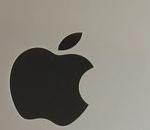This just hit my inbox from Consumer Reports so I thought I’d share it with you: “Consumer Reports engineers have just completed testing the iPhone 4 and have confirmed that a hardware flaw creating the reception problem. As a result, Consumer Reports has decided not to recommend the iPhone 4.”
For more information please see the full post below or visit http:/s.consumerreports.org/electronics/2010/07/apple-iphone-4-antenna-issue-iphone4-problems-dropped-calls-lab-test-confirmed-problem-issues-signal-strength-att-network-gsm.html
Lab tests: Why Consumer Reports can’t recommend the iPhone 4
It’s official. Consumer Reports’ engineers have just completed testing the iPhone 4, and have confirmed that there is a problem with its reception. When your finger or hand touches a spot on the phone’s lower left side—an easy thing, especially for lefties—the signal can significantly degrade enough to cause you to lose your connection altogether if you’re in an area with a weak signal. Due to this problem, we can’t recommend the iPhone 4.
We reached this conclusion after testing all three of our iPhone 4s (purchased at three separate retailers in the New York area) in the controlled environment of CU’s radio frequency (RF) isolation chamber. In this room, which is impervious to outside radio signals, our test engineers connected the phones to our base-station emulator, a device that simulates carrier cell towers. We also tested several other AT&T phones the same way, including the iPhone 3G S and the Palm Pre. None of those phones had the signal-loss problems of the iPhone 4.
Our findings call into question the recent claim by Apple that the iPhone 4’s signal-strength issues were largely an optical illusion caused by faulty software that "mistakenly displays 2 more bars than it should for a given signal strength."
The tests also indicate that AT&T’s network might not be the primary suspect in the iPhone 4’s much-reported signal woes.
We did, however, find an affordable solution for suffering iPhone 4 users: Cover the antenna gap with a piece of duct tape or another thick, non-conductive material. It may not be pretty, but it works. We also expect that using a case would remedy the problem. We’ll test a few cases this week and report back.
The signal problem is the reason that we did not cite the iPhone 4 as a "recommended" model, even though its score in our other tests placed it atop the latest Ratings of smart phones that were released today.
The iPhone scored high, in part because it sports the sharpest display and best video camera we’ve seen on any phone, and even outshines its high-scoring predecessors with improved battery life and such new features as a front-facing camera for video chats and a built-in gyroscope that turns the phone into a super-responsive game controller. But Apple needs to come up with a permanent—and free—fix for the antenna problem before we can recommend the iPhone 4.
If you want an iPhone that works well without a masking-tape fix, we continue to recommend an older model, the 3G S. (The full list of recommended smart phones models appears as part of our latest Ratings, available to subscribers.)
—Mike Gikas


1 comment for “Lab tests: Why Consumer Reports can’t recommend the iPhone 4”